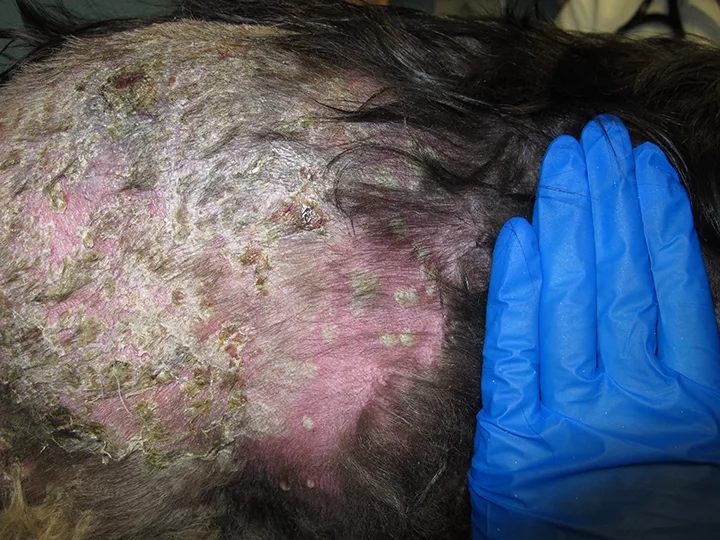Image Gallery: Immune-Mediated Skin Diseases
Alison Diesel, DVM, DACVD, Texas A&M University
Immune-mediated skin diseases (ie, pemphigus foliaceus, discoid lupus erythematosus, erythema multiforme, immune-mediated vasculitis, plasma cell pododermatitis) are uncommon but should be considered in patients that have symmetrically distributed lesions, affected nonhaired skin (eg, foot pad, nasal planum, mucous membrane), and a lack of response to nonimmune-mediated disease therapy. Biopsy is considered the gold standard for diagnosis of these conditions. Patients presented with dermatologic concerns should first be evaluated for common pruritic skin diseases caused by ectoparasites (eg, sarcoptic mange, demodicosis), infections (eg, bacterial pyoderma, Malassezia spp dermatitis, dermatophytosis), and/or allergies (eg, flea allergy dermatitis, food allergy, atopic dermatitis).
Following are examples of immune-mediated skin diseases that might be encountered in small animal practice.

FIGURE 1
The dorsal trunk of an Australian shepherd dog with pemphigus foliaceus, likely the most commonly diagnosed immune-mediated skin disease in companion animals.1,2 Thick mounded crusts are present along the haired skin of the trunk; large pustules spanning multiple hair follicles can also be seen. In addition, extensive coalescing crusts and mild to moderate erythema is appreciated. The primary pustular lesion is caused by loss of cohesion between skin cells due to attack on the desmosomes that hold cells together.
In dogs, autoantibodies directed at desmocollin-1 (one part of the desmosome) leads to disruption of cellular adhesion, resulting in pustule formation. The specific target in cats is unknown. This autoantibody attack may be caused by a drug trigger, internal illness, or other unknown factors.
Pemphigus foliaceus mimics common infectious causes of folliculitis, including superficial bacterial folliculitis, demodicosis, and dermatophytosis; superficial bacterial folliculitis is most commonly observed in dogs. In these infectious conditions, however, cellular infiltrate (along with microbial organisms or parasites/mites) occupies the hair follicle, leading to expansion and pustule formation.